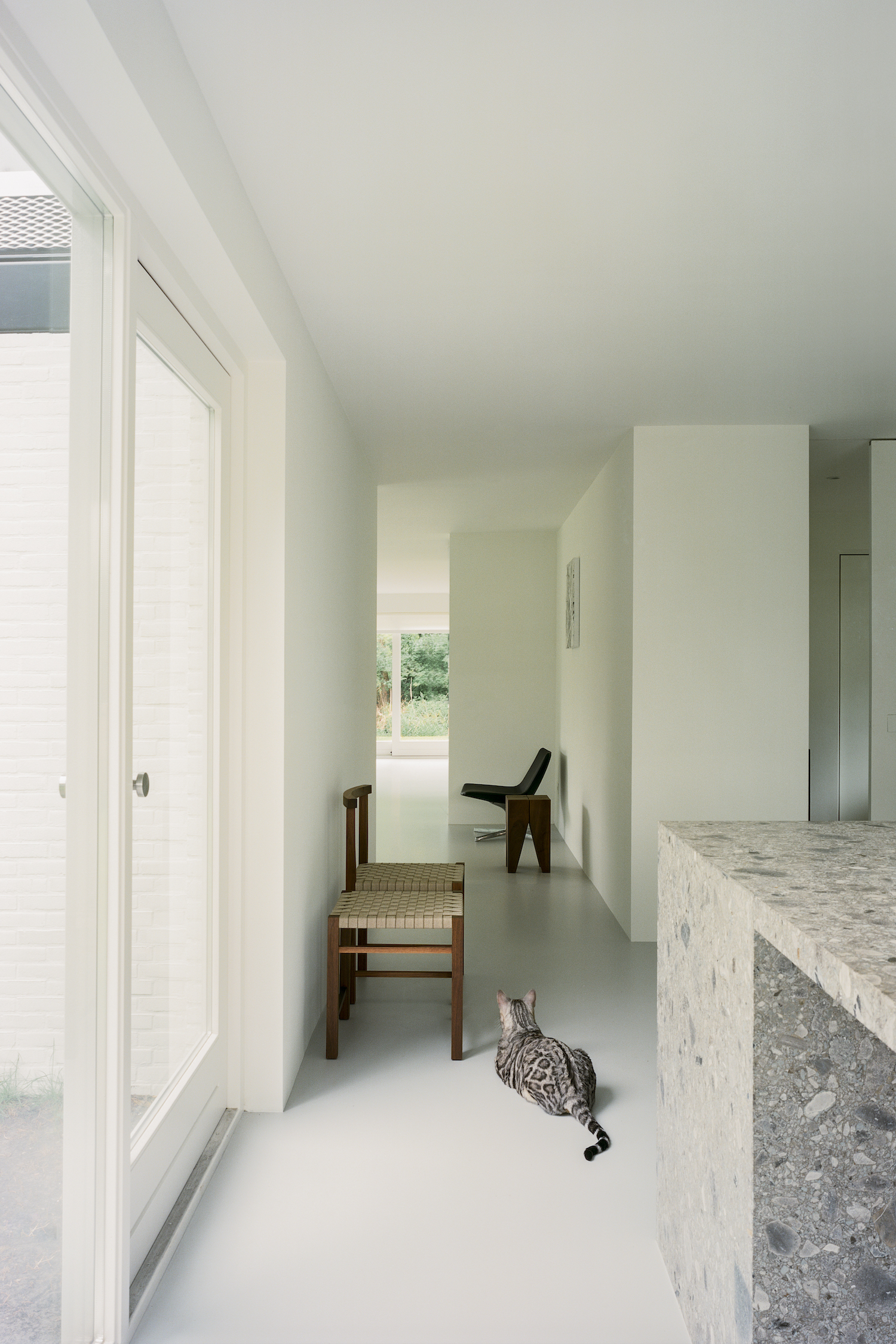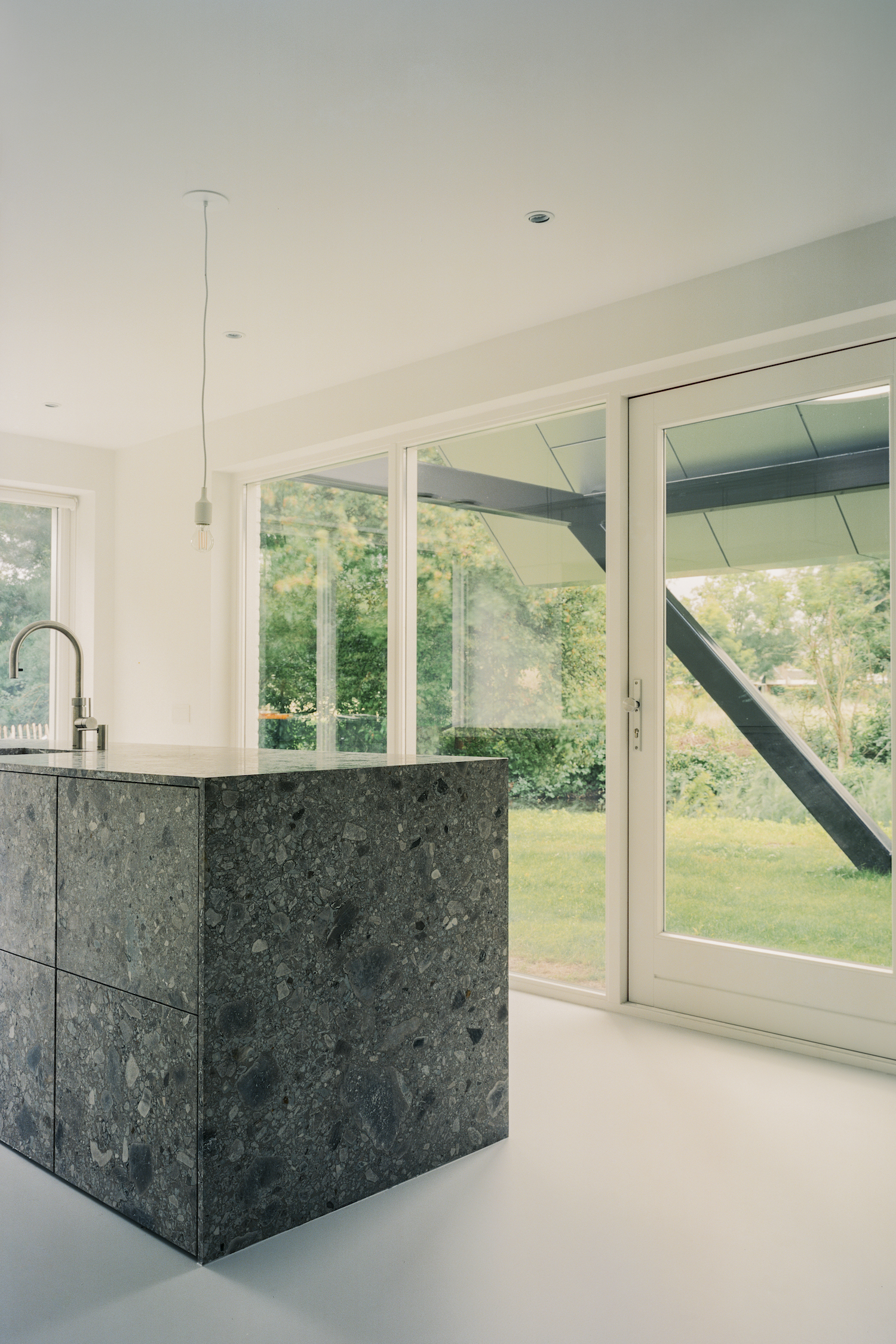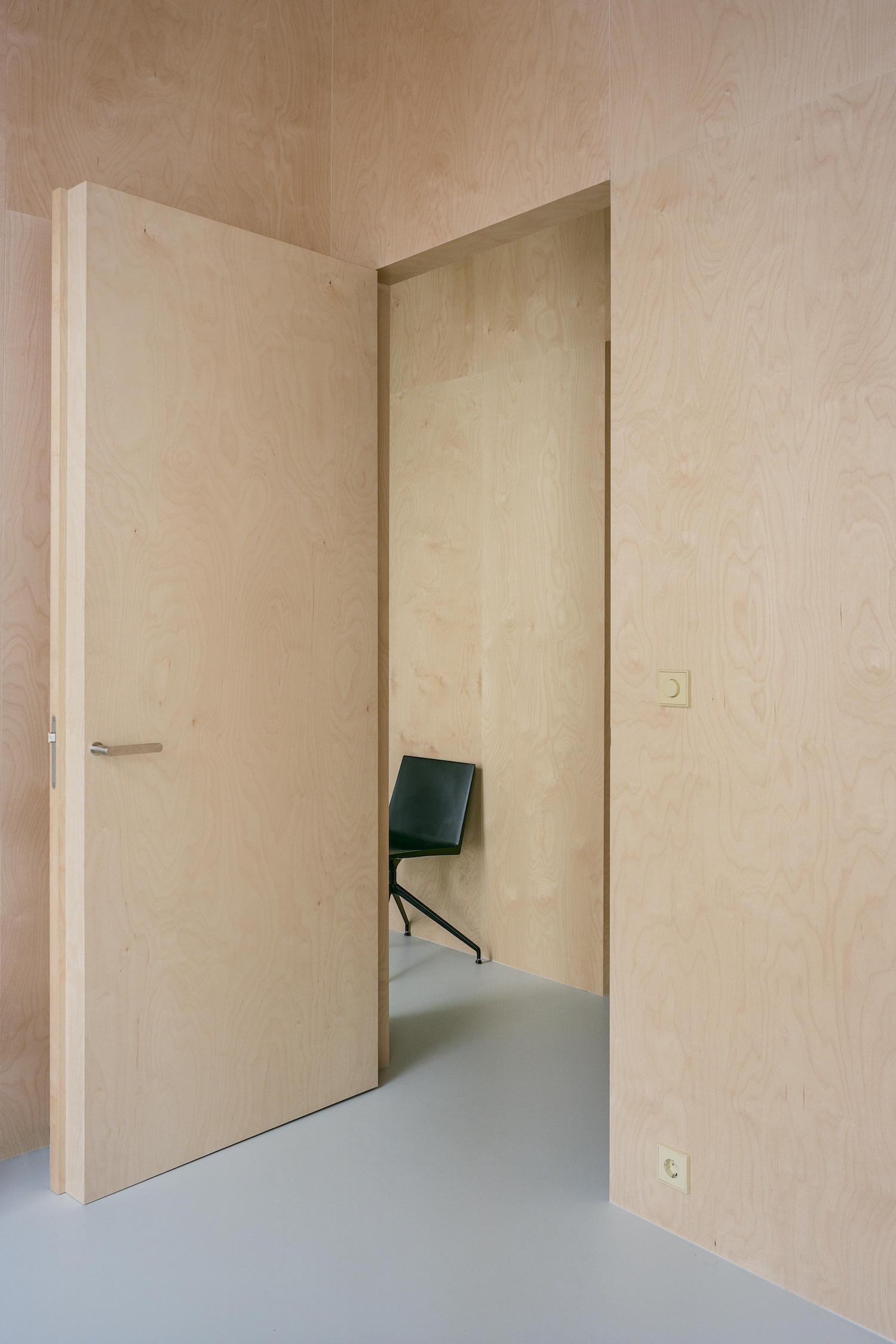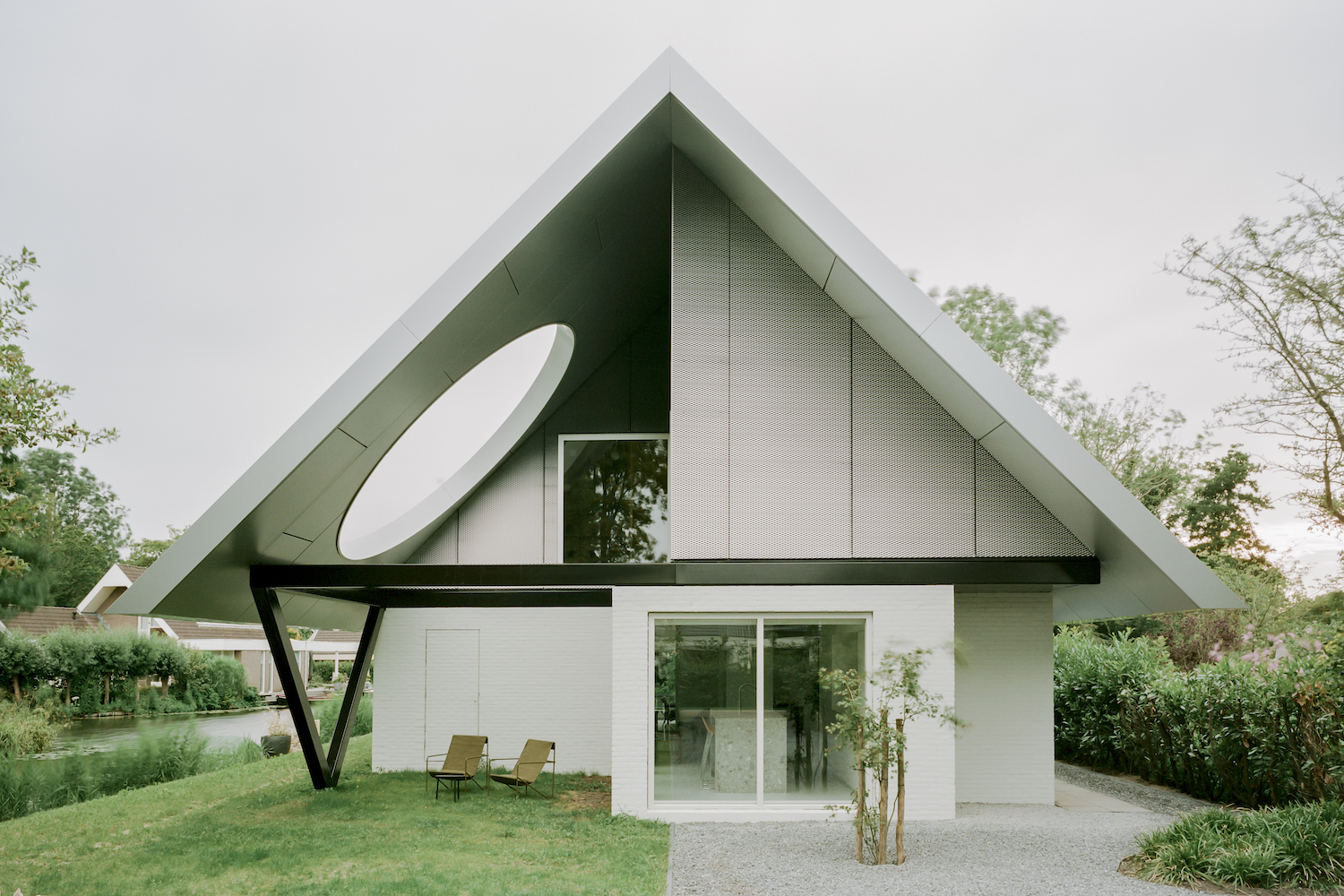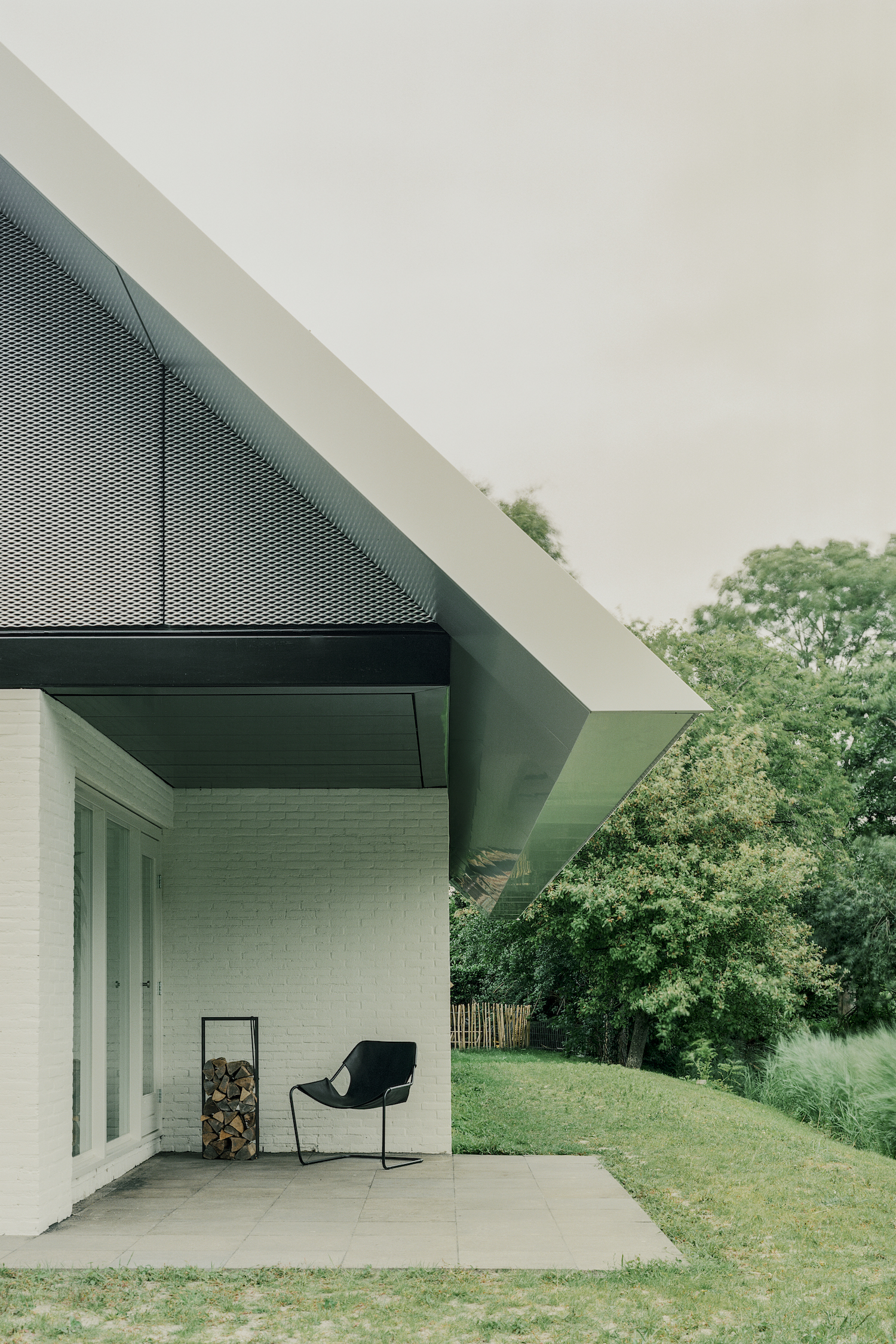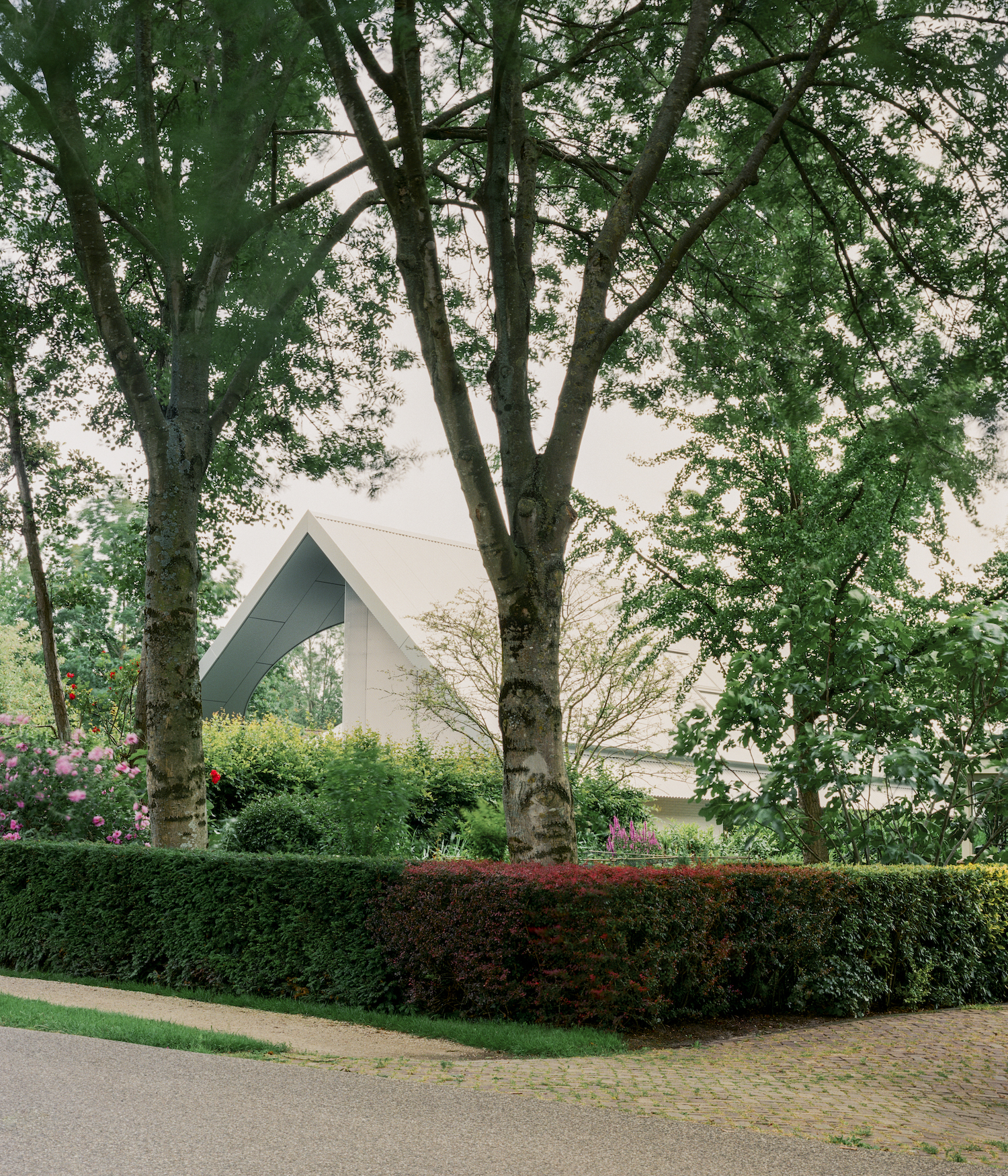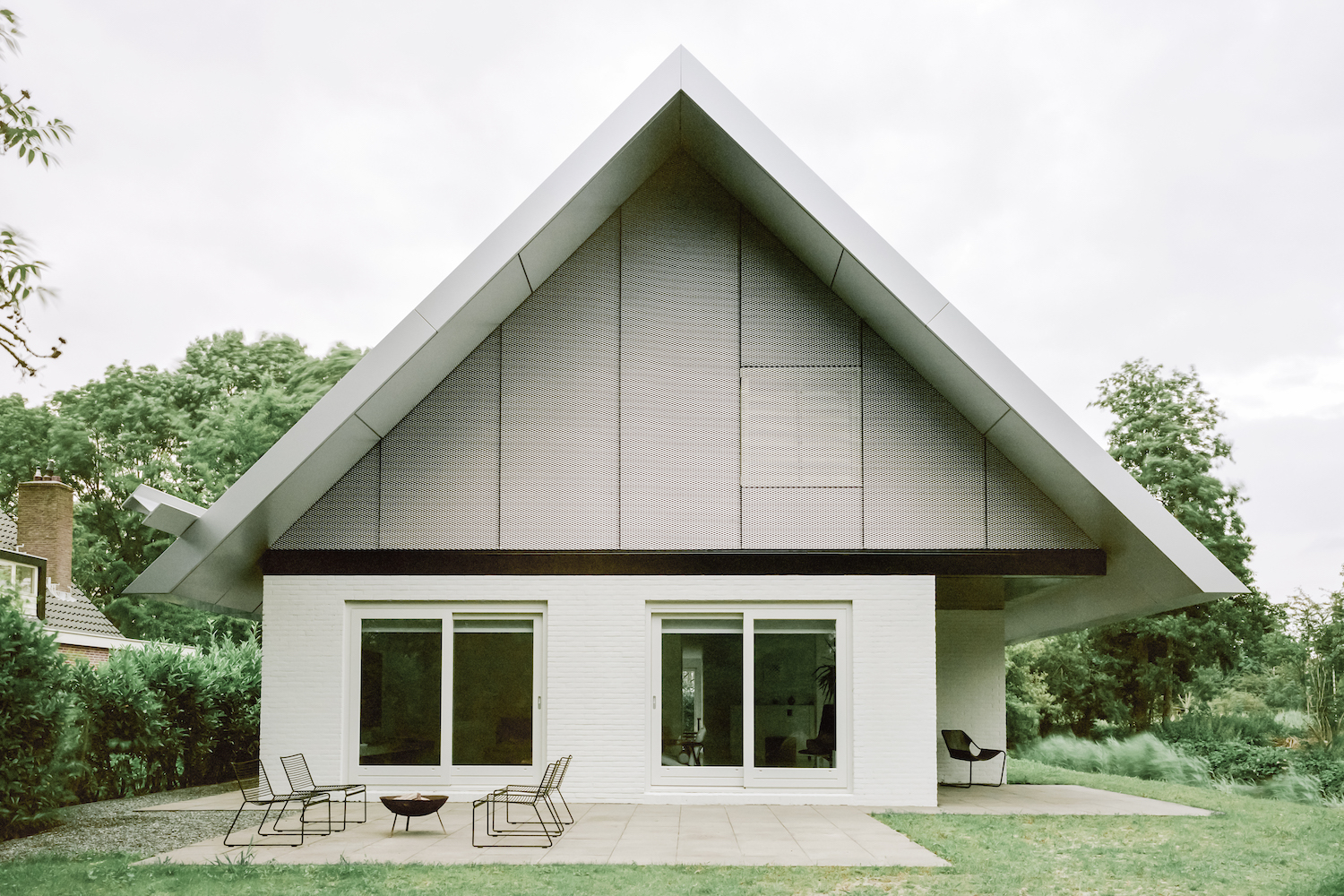AB House is a minimal residence located in Broek op Langedijk, Netherlands, designed by Space Encounters. AB House in Broek op Langedijk was designed for a growing family. Until the early 1970s, the dyke villages of Broek, Zuid, and Noord-Scharwoude were divided into hundreds of small islands that could only be reached by boat. A portion of the islands has been designated as a nature reserve, while another portion has been developed as a residential area. This residential area is made up of individual plots of land each with a single-family home surrounded by water. These houses’ architecture is distinguished by fragmented volumes and prominent pitched roofs. Variations in the shape and size of the pitched roofs and window openings, as well as differences in the brickwork, distinguish the dwellings. AB House is a modest, yet distinct example of how living in the countryside can be made more sustainable and adapted to changing demands for contemporary living, despite challenges such as the transformation of the existing housing stock.
One key starting point for the renovation and transformation of the house was to keep the existing ground floor layout and enlarge the house on the first floor by building up to the maximum volume allowed by urban regulations. To accomplish this, a new roof and first floor have been designed, while the ground floor retains the feeling of fragmented volumes. The roof and first-floor addition cover the existing brick structure and are supported by a striking black steel structure. Regardless of volume variations, the steel mesh wrap on the first floor and white painted brickwork on the ground floor give each layer its own character and sense of unity. Deep sight lines and generous openings in the ground floor volumes connect the kitchen, living room, and office space to the outside, whereas the first floor with a more closed facade, specific openings, and wooden interior creates a confined and warm atmosphere with bedrooms and the bathroom.
The pitched roof, clad in corrugated aluminum, gives the house its distinctive silhouette and ties the whole thing together. A steel beam was used to transform the rainwater gutter, which was traditionally a distinct feature of pitched roof architecture in arcadian areas, into a pronounced, yet whimsical architectural feature. In addition, the house has abstract openings and prismatic forms in the black steel structure, such as a circle, triangle, and square. Precise detailing of the aluminum finishings, as well as a restrained material and color palette, bring the various elements together in plan, facade, and section. The one-dimensional house of the 1980s is transformed into a more layered and diverse piece of architecture that attempts to fully absorb the qualities of its surroundings.
Photography by Lorenzo Zandri
